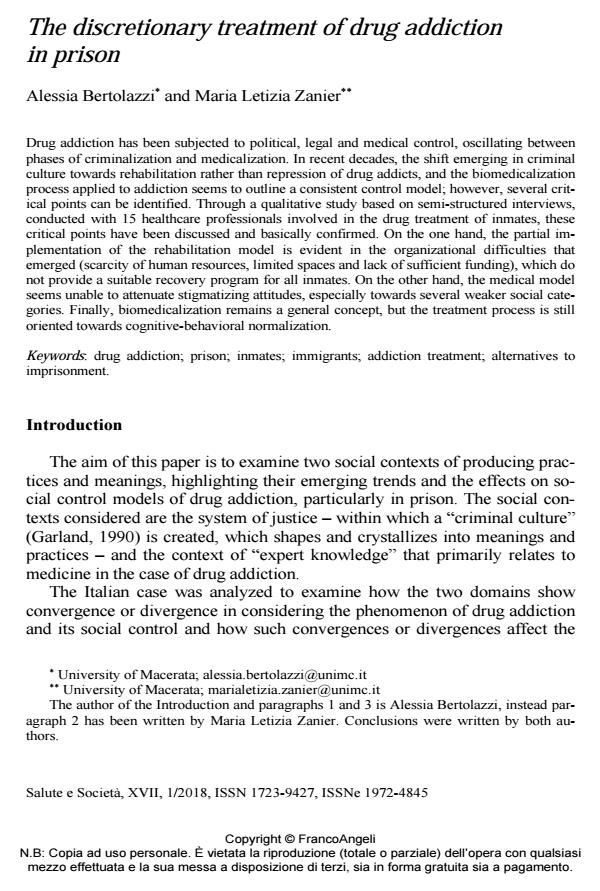The discretionary treatment of drug addiction in prison
Journal title SALUTE E SOCIETÀ
Author/s Alessia Bertolazzi, Maria Letizia Zanier
Publishing Year 2018 Issue 2018/1
Language English Pages 14 P. 59-72 File size 205 KB
DOI 10.3280/SES2018-001005
DOI is like a bar code for intellectual property: to have more infomation
click here
Below, you can see the article first page
If you want to buy this article in PDF format, you can do it, following the instructions to buy download credits

FrancoAngeli is member of Publishers International Linking Association, Inc (PILA), a not-for-profit association which run the CrossRef service enabling links to and from online scholarly content.
Drug addiction has been subjected to political, legal and medical control, oscillating between phases of criminalization and medicalization. In recent decades, the shift emerging in criminal culture towards rehabilitation rather than repression of drug addicts, and the biomedicalization process applied to addiction seems to outline a consistent control model; however, several critical points can be identified. Through a qualitative study based on semi-structured interviews, conducted with 15 healthcare professionals involved in the drug treatment of inmates, these critical points have been discussed and basically confirmed. On the one hand, the partial implementation of the rehabilitation model is evident in the organizational difficulties that emerged (scarcity of human resources, limited spaces and lack of sufficient funding), which do not provide a suitable recovery program for all inmates. On the other hand, the medical model seems unable to attenuate stigmatizing attitudes, especially towards several weaker social categories. Finally, biomedicalization remains a general concept, but the treatment process is still oriented towards cognitive-behavioral normalization.
Keywords: Drug addiction; prison; inmates; immigrants; addiction treatment; alternatives to imprisonment.
- Legal culture and professional cultures in the prison system Alvise Sbraccia, Francesca Vianello, in Oñati Socio-Legal Series /2022 pp.1463
DOI: 10.35295/osls.iisl/0000-0000-0000-1324
Alessia Bertolazzi, Maria Letizia Zanier, The discretionary treatment of drug addiction in prison in "SALUTE E SOCIETÀ" 1/2018, pp 59-72, DOI: 10.3280/SES2018-001005